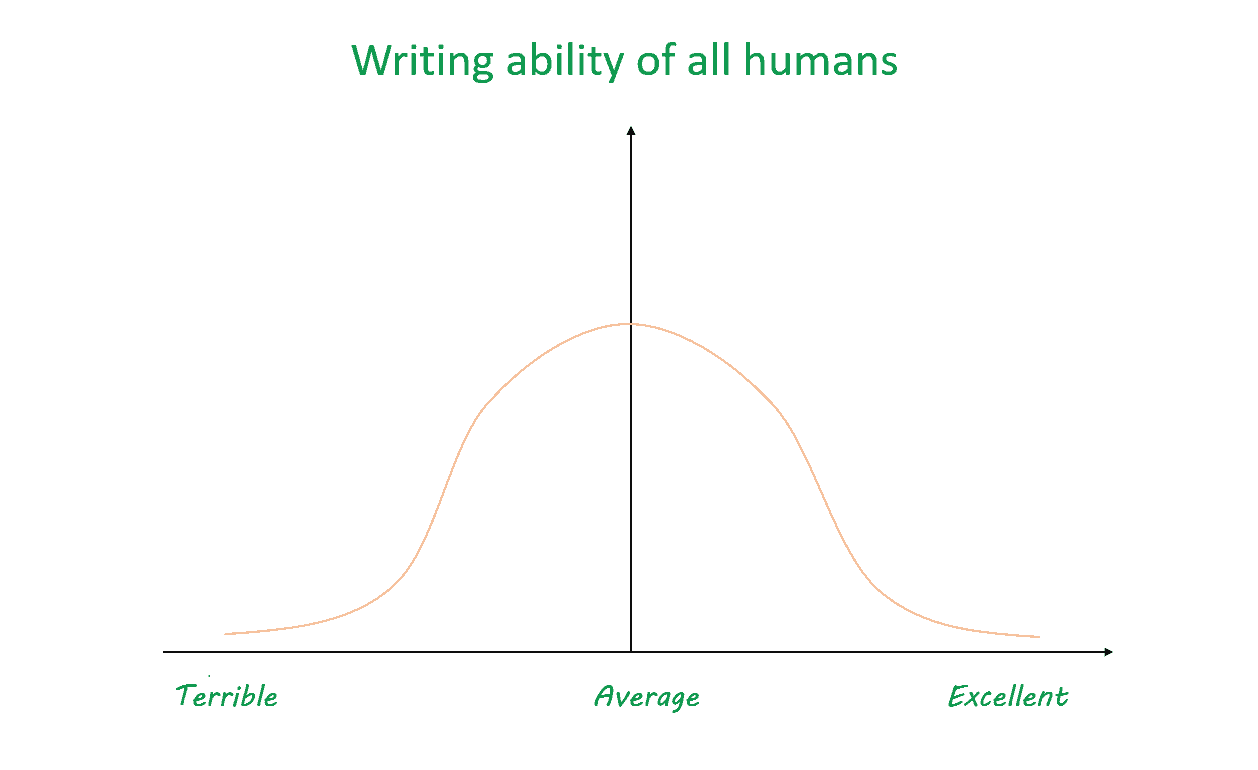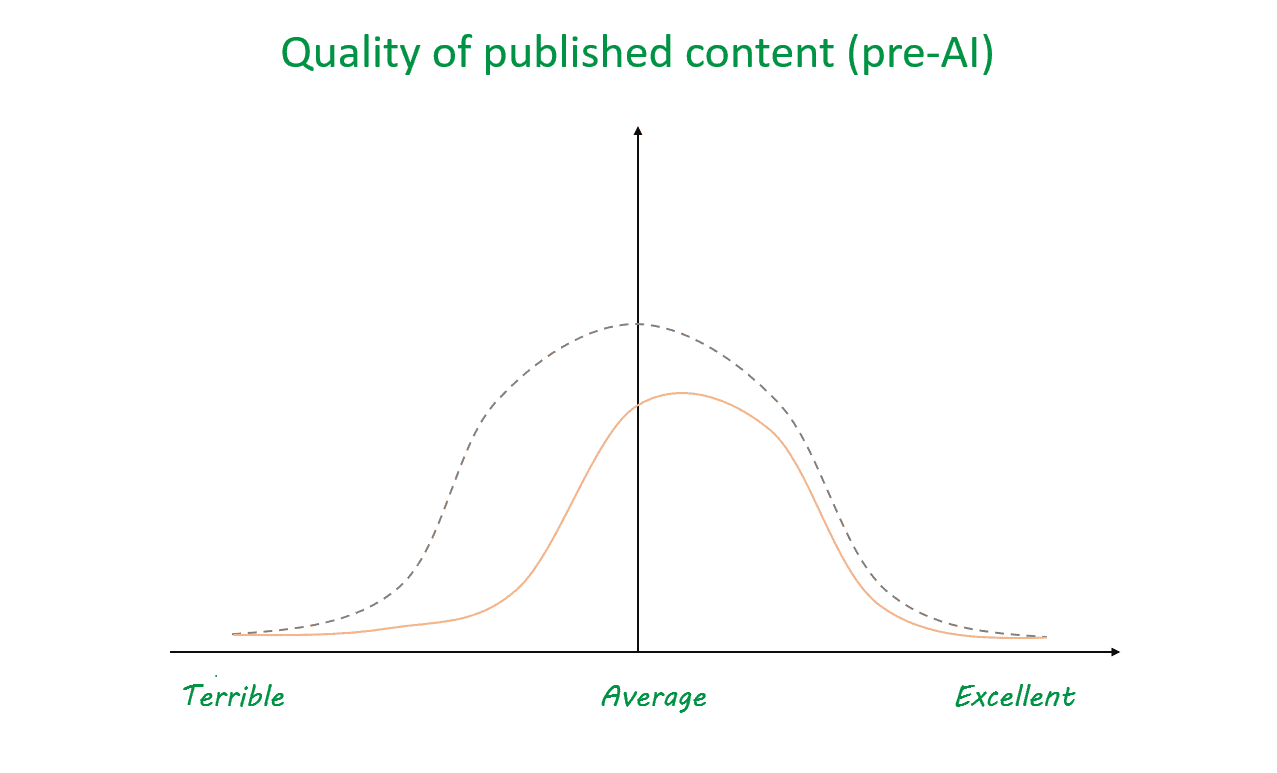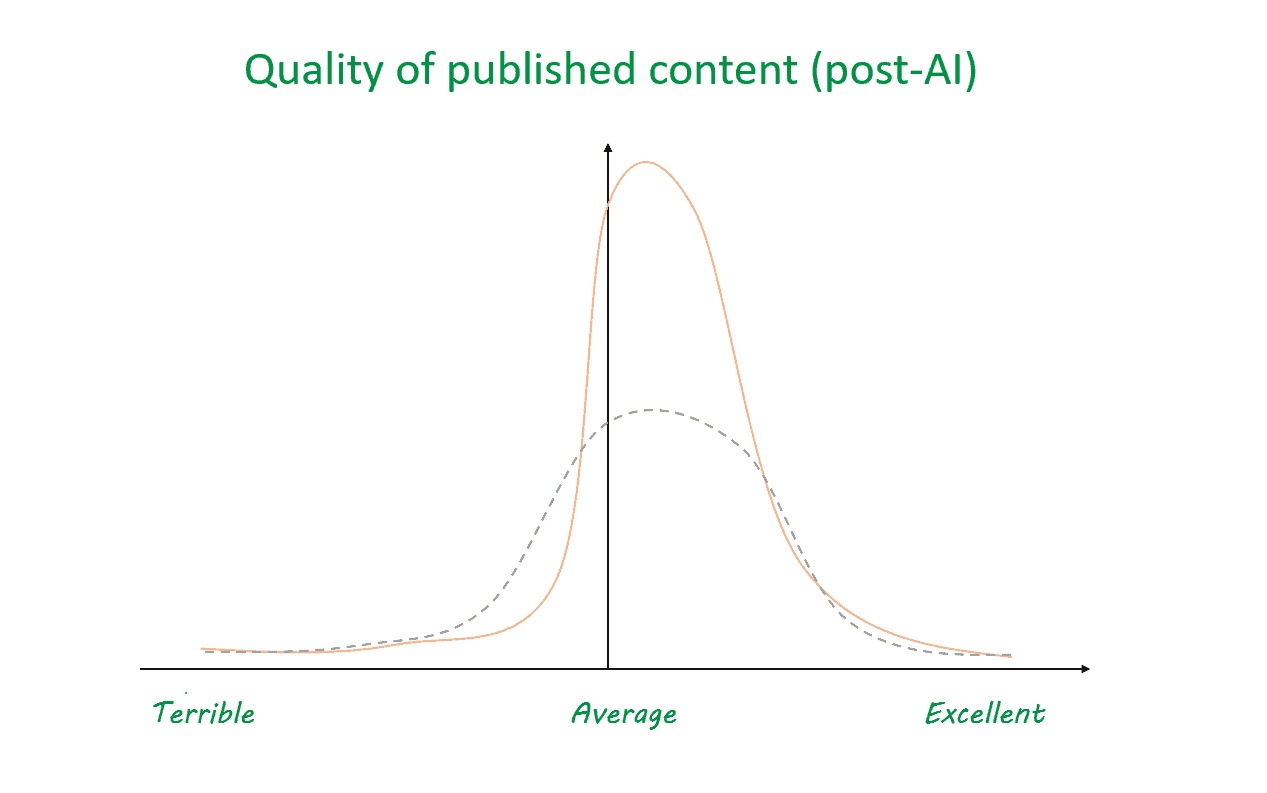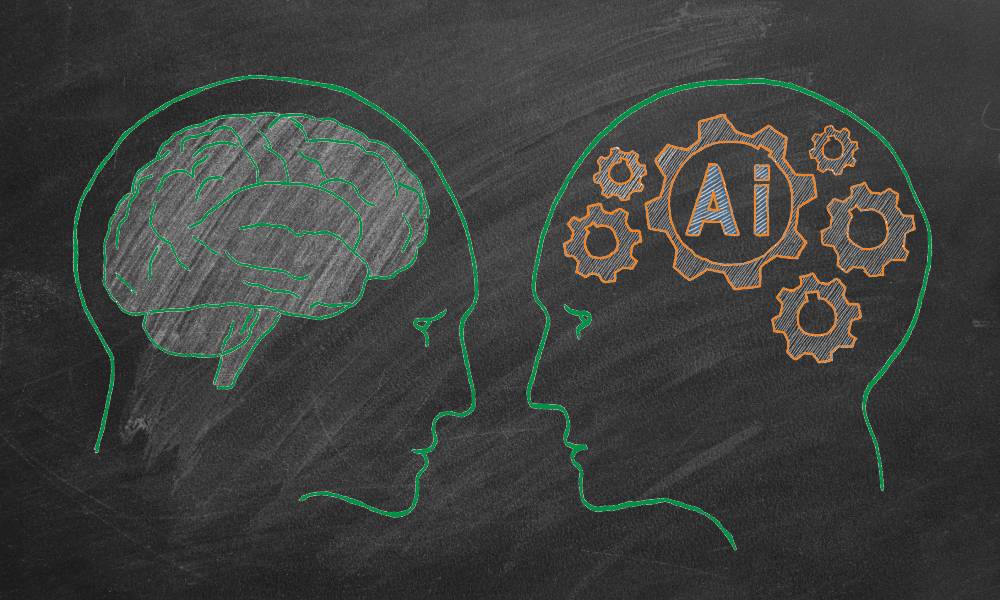2023 was the year of ChatGPT and copywriting. It was the year AI was going to take over the world and we human copywriters were all going to be out of jobs.
Fast forward to 2024. That hasn’t happened. It doesn’t seem likely to happen this year either. On the other hand, AI copywriting is here to stay. So what does that mean for human copywriters?
My personal belief is that AI copywriting is actually going to make writer like me even more important. Not just because I need to say that to protect my future either. It’s all to do with three things and how they intersect:
- How AI copywriting works
- How well humans write
- Which humans write and publish
Let me explain!
1. How does AI copywriting work?
AI writing systems are powered by large language learning models, or LLMs. What does that mean? In essence:
- You throw mountains of written text at the AI system
- It analyses that text and learns what is most likely to come next after any particular word.
- It also learns about grammar and syntax. (Some of this may be programmed in to start with, but it learns from the text it processes too.)
This means that AI writing will be human-like, but will tend towards the average of the dataset. The most likely. That’s what LLMs do – they look for the patterns and the predictable.
It also means, by the way, that the AI will pick up inaccuracies and biases in its dataset. It doesn’t discriminate, it sucks everything up equally. Hence the oft-repeated advice to fact-check.
2. How well do humans write?
So how is the AI process different from human writing?
The key difference is that writing ability varies from person to person, and is spread along a bell curve.

Most people write average copy. But there are outliers – some who write terribly, and some who write outstandingly well. Creativity, whether amazingly good or terrifyingly bad, happens at those edges. That’s where you find the writing which stands out.
Now, AI is a godsend to those at the terrifyingly bad end of the spectrum. It’s not such a big thing for the amazingly good, since they write better than any AI already. As Rand Fishkin so wisely commented back in April last year, ‘The floor for content has never been higher. But the ceiling is still higher than most of us can imagine.’
‘Most of us’ are average writers. (Duh! That’s what average means!) ‘Most of us’ are not copywriters and should not be copywriters. Copywriters – people who get paid for writing – should have skills way above average. Their words should sparkle. These are precisely the people who have nothing to fear from AI copywriting.
That’s the first point, but there’s one more factor to consider. One which turns AI copywriting from a not-so-scary-after-all monster into an opportunity.
3. Which humans actually write and publish
Until ChatGPT and other AI systems burst onto the scene, if you wanted copy you had three choices:
- Hire a copywriter
- Write your own
- Do nothing and go on wanting
That last happened a lot! Think about all those business owners you know who can talk about what they do, but couldn’t write an article about it to save their lives. They would scrabble together the bare minimum of passable copy, then stop there.
Most of those people who published little to nothing at all were ones with average or below average writing skills. So if we look not at human writing ability, but at the quality of what’s actually published, we don’t get a bell curve. We get something like this:

Not everyone publishes, but those who do are mostly on the ‘better than average’ side.
So what happens when AI copywriting comes along?
All those below-average writers who didn’t publish previously now have a quick, cheap, easy way to generate acceptable copy. To them, it seems fantastic. (Remember, they’re not great writers in the first place.) Sadly for them, it’s acceptable, safe, average copy rather than anything outstanding.
So thanks to AI, the amount of average copy published overall goes through the roof! What about the outstanding copy? Since that still requires a good copywriter, the total volume stays about the same. So when we look at the quality of all published content, the chart is something like this:

Essentially, a wide plain of dull grey, where the precious, polished gems that human copywriters have created stand out more than ever.
That is the opportunity for human copywriters in 2024.
Creating copy which sparkles
We’re all bombarded with advertising and sales messages all day, already. Now there’s going to be even more. Most of it will be fake-vanilla-flavoured blancmange. Copywriters who can make words work harder, who can make a difference, will be more important than ever.
There will be some businesses which are happy with fake vanilla.
There will be others who want the real thing – richer, less cloying, better able to accentuate other ingredients like their own brand.
There will also be businesses which are happy with fake vanilla most of the time, but will splurge for that special occasion. The most important website pages (home page, service pages, about page and contact page), landing pages for paid ad campaigns, email sales and lead acquisition campaigns … These are the places where words have to work hardest to connect with, convince and convert potential customers.
If you and your business care about words which work, words which shine, words which make you stand out, let’s talk!






